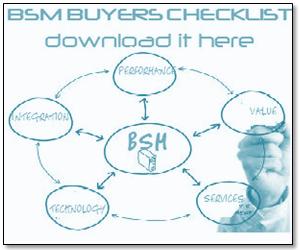
It’s that time of year when the press is filled with the latest IT predictions for the coming year. A couple of articles and surveys caught my attention as they relate to the unspoken imperative of connecting to the business to drive the business for competitive advantage versus just operate the business. This practice, while not called out, is Business Service Management and is the heart and soul of success for many of these initiatives.
In the Gartner Forbes 2011 Survey of Board of Directors, “65% hold ‘high to very high’ expectations for IT strategic contribution to the business in 2012” and “52% rate ‘maintaining competitive advantage’ of ‘extremely high importance’…”. It is no longer IT and the business, IT enables and drives the business. The key question is, “does your IT operate or power your organization?”
As part of its look to the future CIOInsight highlights the Top 3 initiatives keeping CIOs up at night: cutting costs, operational efficiencies and deliver consistent and stable IT performance to the business. These initiatives are neck and neck with the number of organizations that see IT as their competitive edge in the market. Most IT organizations still spend ~85% of their IT budget “just keeping the lights on”, with minimal focus on supporting and delivering upon stable and consistently performing innovative services aligned with business objectives. This percentage of spend is generally ~ 1 – 2 % of revenue spent annually operating rather than driving.
There is also an equal amount of press on new technologies and how to convince your CEO of a new technology. Shouldn’t we be driving solutions leveraging the right deployment technology to drive competitive edge into the organization. Technology for the sake of a technology has no real value. While I agree with many of the points in this particular article on 10 Ways to Sell your CEO on Cloud Computing, it is still selling technology versus a business driving solution. We as IT have to change our thinking to that of the service providers that are popping up daily in selling our CEOs solutions leveraging technologies that drive agility and quality performance into the business, just so happens they use things like virtualization and cloud computing.
I’ve been working with many service providers as of late and it is reminiscent of the dot com era. Those that will survive and thrive are not just chasing the latest technology trend for the short term, but are baking in the practice that will sustain them for the long term and what business is asking of its own IT organizations, the ability to answer 3 questions:
(1) “Am I open for business?”
(2) ”How are we performing?” ”What is the customer experience?”
(3) ”What is the risk of an outage?”
all in real time so as to take action, rather than reporting on it after the game is over. The reason most organizations outsource services is not for cost, but for change that they cannot create from within the organization. The time for IT to change and become the service provider of choice driving value and competitive advantage into their organizations has come.
In a recent CIOInsight survey results for spending in IT Operations/Management/Governance, I see the only area with an increase is Data Center Management. Those that are following the lead of the service providers will see this as the management of the technology to deliver that consistent and stable IT performance for business value. Mobile delivery options prevail as a leading technology as the consumerization / BYOD (bring your own device) of IT continues. However, these solutions must perform and be available to drive your organizations competitive advantage in the market. This is the link to business for 2012 investments requiring the stitching together of data from the many systems and applications that are in place today and turning it into real-time actionable information. Another Survey illustrating many of these and further results is the BSMReview.com 2011 BSM Maturity Benchmark Study.
In 2003 Nicholas Carr wrote a 28 page article for the Harvard Business Review, “IT Doesn’t Matter”. In the article he discussed the outsourcing of IT and the changing roles within IT. Now fast forward 9 years and the advent of the cloud, the explosion of service providers and new buying options. The business is purchasing on its own and creating “The New IT” for those that are not evolving fast enough. Leading analyst firms predict that by 2015 50% of all IT buying decisions will be made by the business, not IT.
I have had many conversations with organizations that are replacing their commodity monitoring tools from the Big 4 Vendors with lower cost options and turning that savings back into the investment of turning their IT organization into service providers of choice creating business value. The investment is in the real time Business Service Views that transform the IT organization into proactive Service Delivery Managers versus reactionary red light / green light monitors turning the sea of data into actionable, intelligent information. The service providers arealso making the very same investments to illustrate operational capability and market differentiation to capture market share fast during this great period of change.
I’ll quote from a long time customer who has leveraged the Operations Center solution for many years now. Their implementation, while it started technically as a single-pane-of-glass, has evolved into the trusted Business Service view and situational awareness of the environment running the business. Because this customer made the transition to trusted adviser and communicator as to the health of the business, he is trusted with purchasing decisions because as he states, “I provide value”. This is the secret sauce – providing business value and relevance for IT.
2012 will be an interesting year without a doubt with new technologies like mobile and cloud computing entering into leading IT organizations, the risk takers seizing the opportunities to drive their organizations. The leaders will emerge as those risk takers who also bake in their operational management and efficiencies with controlled risk to deliver consistent, stable performance and value to the business.
Michele














